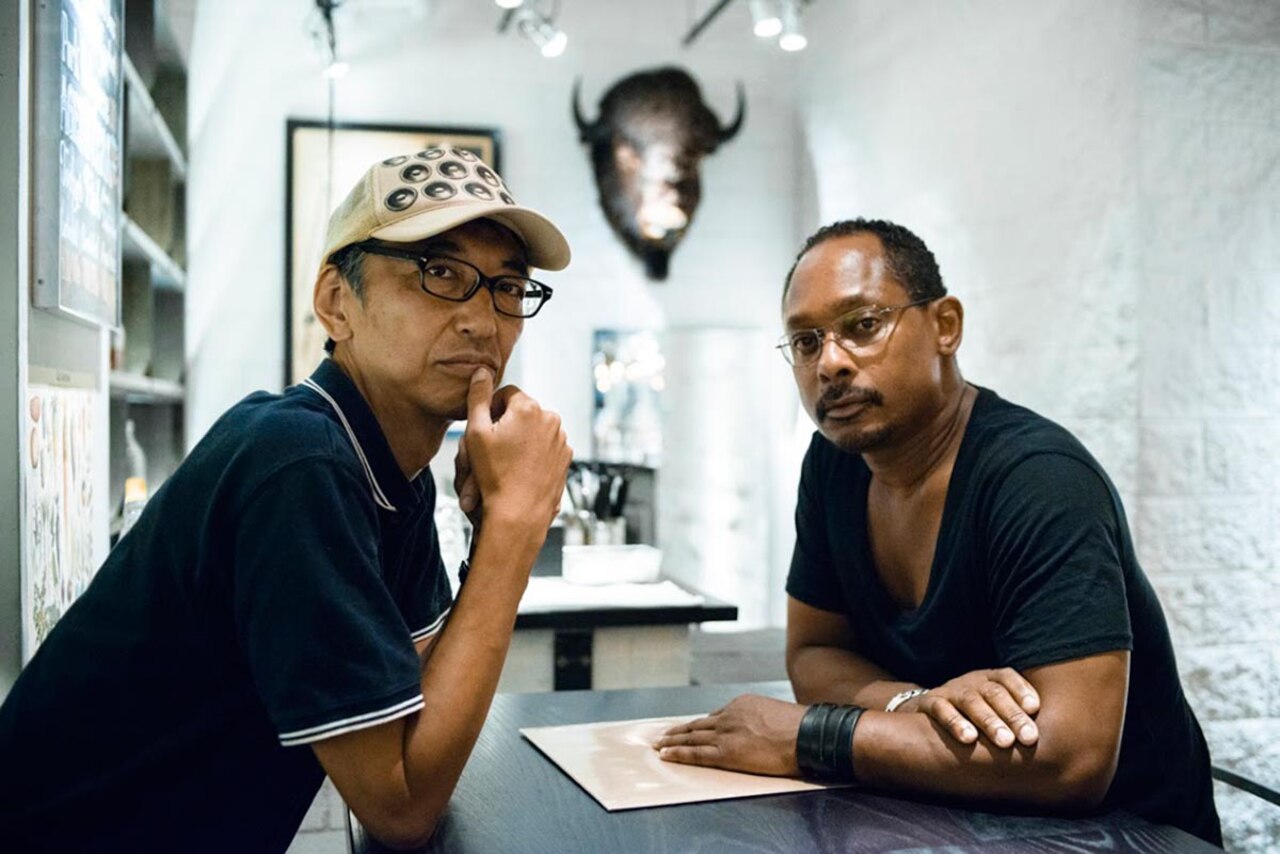
Derrick May Interviews ele-king’s Tsutomu Noda
Tsutomu Noda is a name that any techno fan in Japan would know. He founded the first ever “techno magazine in the world” in 1994, called ele-king, and influenced the techno movement blooming in Japan with his editorial. Derrick May, as you may know, is one of the pioneers who started the electronic revolution in Motor City. Coincidentally, Noda and May are the same age, and have been friends for two decades. There have been many interview sessions between the two of them throughout their friendship, but this is the first time they reverse their roles, with May as the interviewer and Noda as the interviewee.
Did people used to call you Yoda?
No. In Japanese pronunciation, Noda and Yoda don’t sound so similar.
I always thought Noda sounded like Yoda. Anyway, let me get to the questions. What was the best period for music for you as a journalist?
The way you get interested in or enjoy music changes over time as you age. How I got into punk music at the age of 13 is different from how I got excited about Detroit techno in my late 20s. Music is still exciting to me.
Your parents own a restaurant. Were they supportive of your idea of becoming a writer?
Well, you have been to my parents’ restaurant. It is quite famous in the area. I am sure they wanted me to take over the family business. But I didn’t start my career as a music journalist until I was 27, after I quit the first publisher I worked for. The first book I edited was a book on business management. I worked in various different fields that had nothing to do with music, such as biology and history. Stuff I was not even interested in.
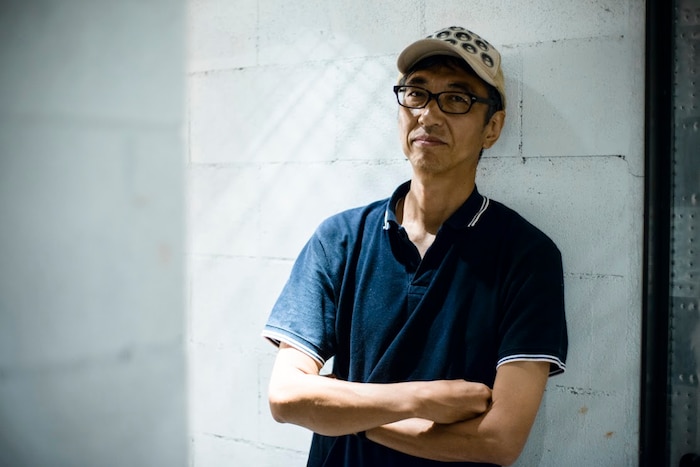
Really? Wow!
I was hesitant to make music my work because I genuinely liked it so much.
That’s understandable. Who is your favorite writer? Just one.
There are too many. I can’t just name one. I read Haruki Murakami and Ryu Murakami as they emerged. I used to love Yoshio Kataoka. Last year, I read many books by a writer called Kiyoteru Hanada from the ’50s to the ’70s. I’ve loved books since I was a teenager. I especially like fiction books, and I’ve read so many novels and poems by people like Kenzaburo Oe, Ango Sakaguchi, Taruho Inagaki, and Shichiro Fukazawa. I also liked Philip K. Dick, J.G. Ballard. You know, all the obvious ones that every bookworm gets into. I’ve always liked books and records. So I always had a desire to make books.
What is the book in your mind that you’d love to write, but haven’t had the time?
Eh... I have some ideas, but I don’t want to talk about it here. [laughs]
Well, then this interview is over! [laughs] Which journalist do you respect the most? When I think of your work, a few names come up in my mind. One is John McCready.
Yeah, he was an editor of NME. The first piece of his work that I came across was the liner notes for your compilation. I pretty much discovered Detroit techno from reading NME and other British music media in the ’80s.
I pretty much discovered Detroit techno from reading NME and other British music media in the ’80s.
Were you skeptical when you first heard about this music from Detroit? The reason I ask is because, at this time, Kraftwerk, YMO, and other electronic groups were on the downswing of their careers. They had already made great records. They established the electronic music business. So what were your thoughts about what was happening in Detroit?
This is actually around the time I got a job at Sony Magazines at the age of 27 and I started working on music publications. All my friends from my hometown (Shizuoka) were into this music. I was quite excited about my new work. This was in the late ’80s, and I felt like it was the period of change. Detroit techno was one of the musics that I felt was symbolic of that era. It had its own distinctive sound. Chicago house and New York’s garage house was also available in record shops at the time, but the music from Detroit struck me as particularly unique. There was something different about it from other forms of dance music. I remember this clearly: when I quit my first job and started working on music publication, in 1991, I recorded some Rhythim Is Rhythim tracks onto a cassette tape, took it to a record company, and asked them to release it.
What? I didn’t know that.
They told me that “It sounds like Kraftwerk and very interesting, but we don’t think we can release it.”
Really?
That was the company [Alfa Records, home of YMO] that our friend Masakazu Hiroishi [who later became the director of Sony Techno, then founded Third Ear Japan, and currently runs UMAA] worked for at that time. His boss is the one refused to release it. I met Hiroishi there for the first time, too.
Ah, so that’s how Hiro comes into the picture… it’s interesting to learn this. The relationship with Hiroishi is also very important. From that relationship came the Mix-Up series, the Japanese relationship with R&S Records, and the career of Japanese artists such as Ken Ishii, of course. There are so many things came out of such simple cassette that you made. That is influence.
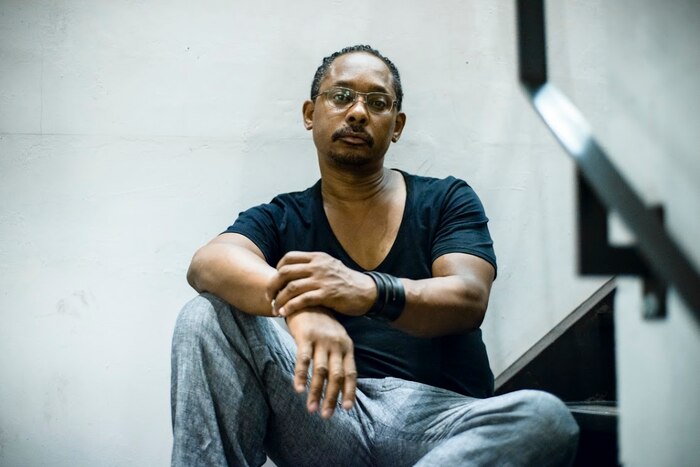
Detroit techno… basically messed up my life. [laughs] No, I’m just kidding, but at the time, music journalism was built around what was popular. Not to say that it’s that much different now, but it was very much about rock stars and about their success in the business. Whereas Detroit techno wasn’t just about the music, but artists from that scene were clearly different. It was all DIY. It was counterculture to the music industry. They had an attitude to rebel against what was powerful. As I was just a rookie music journalist, that really gave me a guideline as where I should find my standpoint in this industry. I felt like I found something I should follow and support. So for me, it was interesting not only musically, but it gave me a perspective, a way of thinking.
It was anti-establishment! Do you believe that you helped change the face of music in Tokyo? Or in Japan? I think you and Hiro did that together.
We discovered more people who appreciated Detroit techno than we expected.
Hmmm, I’m flattered to hear that. What I know is that I had a strong desire to introduce Japan to Detroit techno at that time. Apart from a few years in the ’90s when Sony Techno (where Hiroishi was working) had supported the scene, the artists basically did everything themselves. It wasn’t easy at times to spread the word through commercial media channels. So the strongest motivation I had to keep going was the desire to inform the world about this great music. This couldn’t have been achieved without audience or readers, though. To our surprise, we discovered more people who appreciated Detroit techno than we expected.
Well, you don’t think about change when you are doing it. When I met Hiroishi and you and we all became friends, to find out we had the same philosophy, the same purpose... You guys didn’t realize it, but I thought you were the agents of change.
I wasn’t aware that I was making a change, but since people like yourself and Mad Mike (Banks) inspired me, I wanted to make something happen.
You were already creating your own change.
Hmm, maybe, but I’m not sure. You might wanna take a look at the first issue of ele-king magazine that I’ve brought today. I worked on it in 1994, and it was launched in January 1995. You and Ken Ishii are on the cover. Neither of you had a release on a Japanese major label at the time. Usually, music magazines try to put popular artists on the cover to catch attention and generate sales. But I didn’t want to do that. I wanted to sell it for the quality of the content. So this cover reflected that vision of mine.
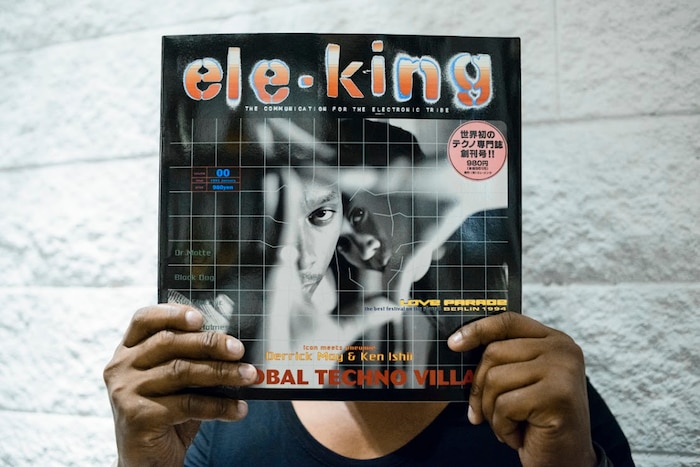
[looks at the cover] Oh my God... [laughs]
I actually wanted to tell you this: what fascinated me about Detroit techno is, of course, the records, but in 1994 I saw you and Jeff Mills DJ in Japan. I went all the way to Club Rockets in Osaka to see you, and you were unbelievably good. I honestly had never seen a DJ that skillful before. Japanese DJs are good in their own way, but your DJ set completely blew me away. I met you in July 1994 at Hard Wax in Berlin, before it moved to the new location.
I remember. Richie Hawtin came in with his brother Matthew later.
You came to Japan for the first time in 1991. Then, I think it was in September of 1994 that you came back. I interviewed you and published it in the first issue of ele-king.
It took three years for me to come back? That is too long. But it took time for the revolution.
Underground Resistance came to play a live set in Japan in December of 1993. In 1994, you came back in September, and Juan Atkins also came a little afterwards, I think. It was around that time that the Japanese audience was exposed to Detroit DJs. It was just so different to what we were used to. How you used the EQs and faders, the rhythmic way of using mixers… everything was new to us. But it wasn’t that Detroit techno blew up immediately. NY house or UK dance music was much more popularity and featured in many more music magazines than Detroit techno. It was still niche. One of the reasons was because there wasn’t much information about it. This is where ele-king came in. Apparently, among the 15,000 copies we made of the first issue, 5,000 copies were sold at Wave [a legendary large-scale record shop] in Shibuya, where our friend Keiko Hoshikawa [who later became the manager of the infamous Cisco Techno record shop, and is currently the techno buyer at Jet Set Records] was working at that time. Isn’t it unbelievable?
I was determined to do things independently.
Really? Fuck. Those were the days. Those were the days. You can’t compare those days to anything.
We realized then that there was a huge craving for information about techno music in Japan. People like me, Hiroishi, and Hoshikawa may have contributed to the recognition of this music, but there were already people who were waiting for it.
It was an electronic revolution! It’s the beginning. How much resistance did you have to face writing those articles at first?
There was no resistance. I was determined. I wanted to make something happen. I wanted to sell my magazine with this cover. In Japan, there were people like Takkyu Ishino, who was a pop star but supported the underground scene as well. But I didn’t want to depend on his popularity to sell my magazine – I was determined to do this independently.
Yeah, that’s right. That’s the way. For all the wonderful writing, the visual element of the magazine was equally important. I think Kumiko Nakata was important for your early days. Visually, what she did was fabulous. She added colors to your words.
Of course. I think so, too. There are many others we should mention, such as Kengo Watanage, who used to publish a fanzine called Delic around that time. The Sony Techno staff were important too.
When did you first visit Detroit?
When Underground Resistance released Interstellar Fugitives in 1998, I asked Mike Banks if I could interview him via email. He wrote me back saying, “Come to Detroit if you want to find out more.” So I decided to go to Detroit in September of 1998. It was a wonderful experience. Submerge was still near the Detroit Tigers stadium. Octave One was working at Submerge. There was Mike Banks’ race car in the parking garage. On the wall of the garage, there was graffiti saying “Fuck The Majors” written by Drexciya. Juan Atkins was living in the same building. When I first visited Transmat, Daniel Bell lived next door running 7th City, the label. In the basement of Transmat building, there was the atelier of Abdul Qadim Haqq. In the office, Neil Olivierra (Detroit Escalator Company) was working, Global Communications music was playing. It was only ten days, but I will never forget that experience.
Tokyo and Detroit are totally different. What surprised you the most?
I was surprised by how many abandoned buildings there were. It was totally different from daily life in Tokyo. The culture, how people live – everything was so different. It was full of surprises.
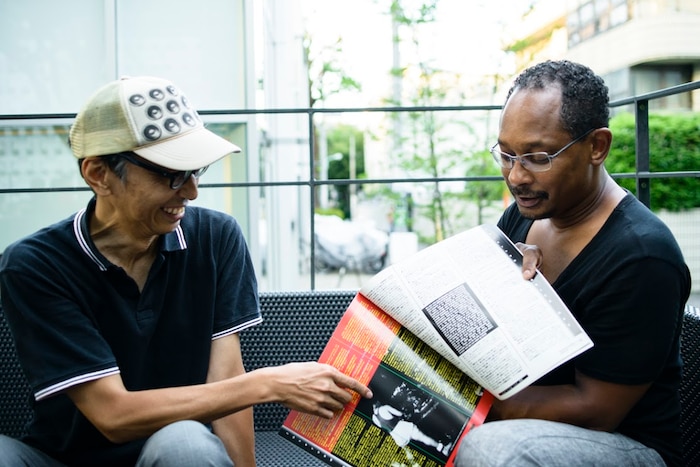
You published the book Black Machine Music in 2001. When did you come up with the idea to write a book about Detroit techno? How was the response in Japan?
I wrote it in six months. I spent most of the time researching. Then I wrote the whole book in a short period of time. I wanted to write about the background of the music. I got great reactions from people. I was happy that people who didn’t know techno or house enjoyed it.
Japan is a very enthusiastic supporter of techno, and many Detroit techno artists have a special feeling toward this country. Do you feel that you contributed to building such a relationship?
It may be hard to believe, but Detroit techno was not so popular back in the early ’90s. The first UR show in 1993 wasn’t packed, even though it was right after the release of “Hi Tech Jazz” and “Star Dancer.” Carl Craig’s first live performance was quite empty. Only 100 people were at Theo Parrish’s first appearance. There was no Detroit techno section at Disk Union. If my book or writing helped Detroit techno’s popularity in Japan, I would be honored.
How about techno in general? Do you feel that you contributed to bringing back techno music in Japan? Was there initially a scene that supported electronic music in Japan or was it just a part of global movement?
Listeners of ’80s synth pop hated house and techno initially. So I think the idea that Japanese people love electronic music is a fantasy of outsiders. It is one of exoticism around YMO and Japanese technology. But whether it is from Detroit or Germany, techno has always been popular in Japan. When I first published ele-king, we used to say it was “the first techno magazine in the world.” So I am happy that I got to be a part of this culture.
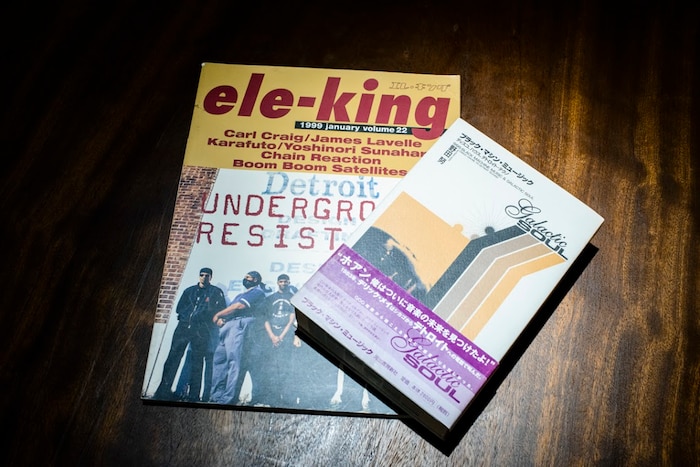
Why did you stop ele-king?
I have not stopped making ele-king. In fact, I am working on the next issue. But I did stop it for a while. When I left remix magazine, Naohiro Ukawa of Dommune proposed that I should re-start ele-king. I hesitated at first, but I am very thankful to Ukawa. Without him, there would be no ele-king now.
How do you feel now? What’s next for you?
I started my career as an editor before I became a writer. My job was to get other people to write, so I’m more interested in creating media rather than writing myself. Currently, I’m running ele-king online and also in print. The printed version is more like a book than a magazine – I prefer to make something that physically lasts. Additionally, I think the problem of the current music scene is the lack of balance between culture and market. The balance is off. For example, in the ’90s, popular music and not-so-popular music that didn’t sell co-existed. Now, only popular music gets attention. There is no harmony between the two. I would like to bring that balance.
That is right. We live in an instant coffee society. You can just press a button to get cappuccino. You hungry? Microwave. Ding! But what do you think about young generation of Japanese music journalists? Are you aware of young journalists?
There are good writers. The online ele-king is mostly written by young writers in their 20s and 30s. But I was very disappointed when we tried to find a club music writer for ele-king. We received 20 to 30 applications, but 90% were into indie rock. 10% were hip hop writers. There were zero club music writers. So my goal as an editor is to find good club music writers and train them. As you know, you need good writers to create good music media.
Noda, you need to teach them!
Header image © Yasuhiro Ohara

